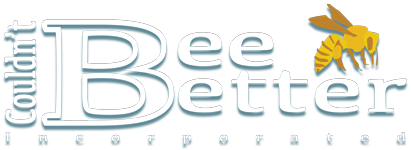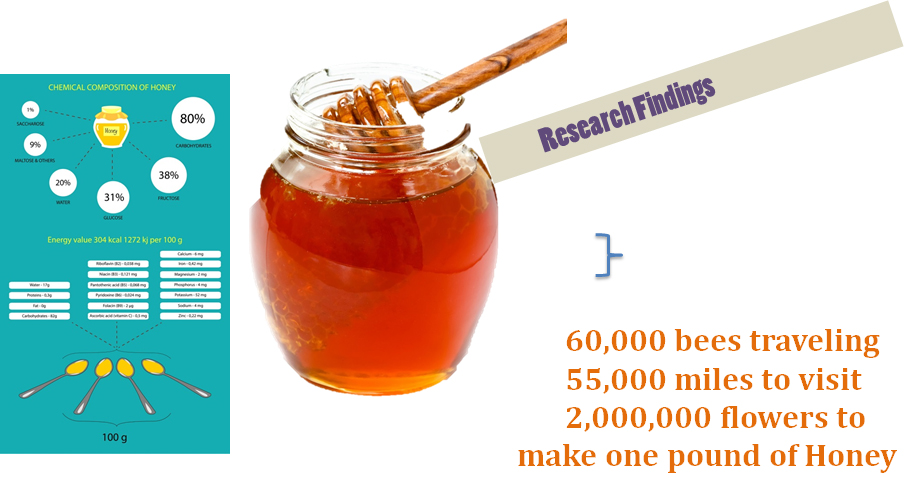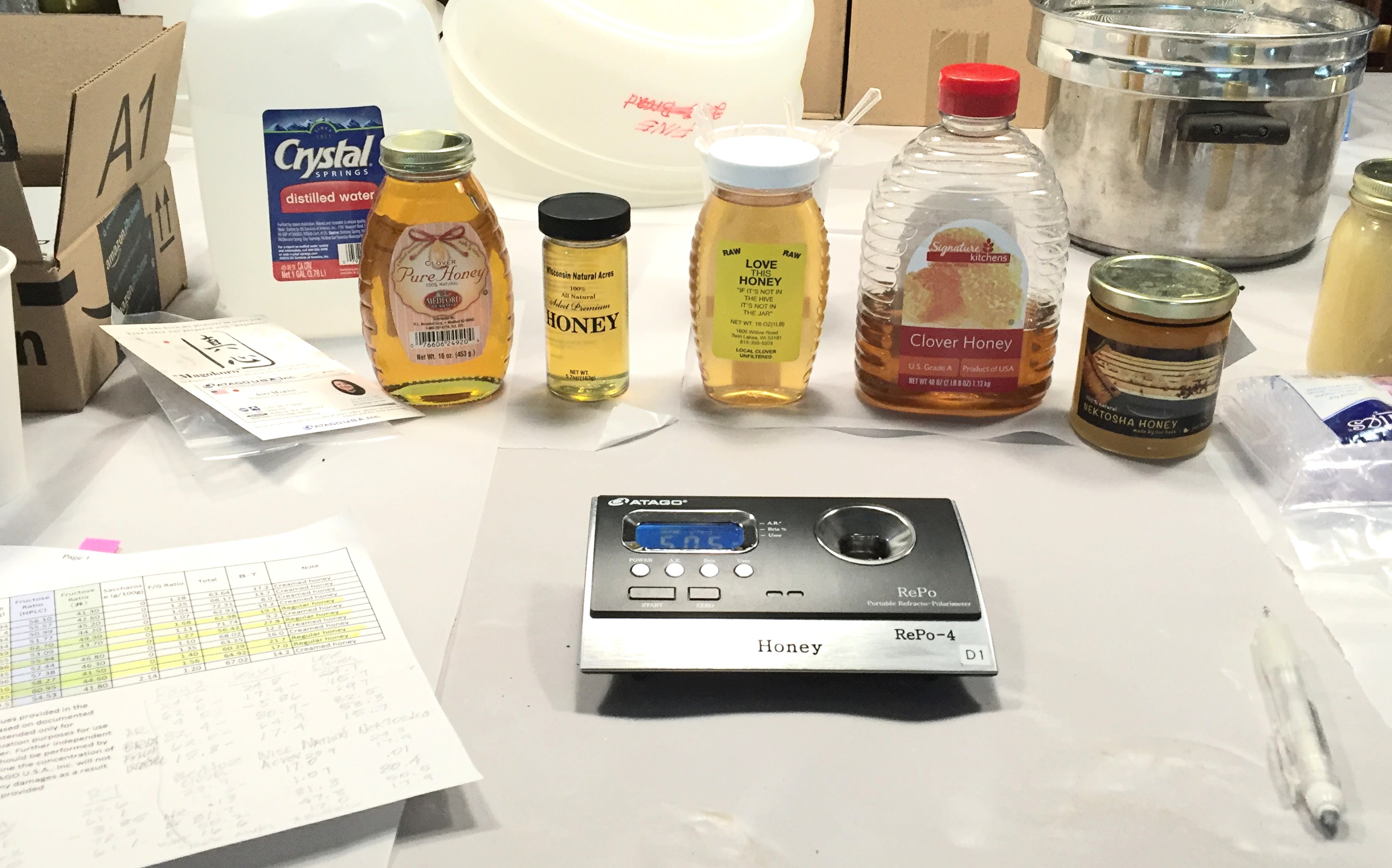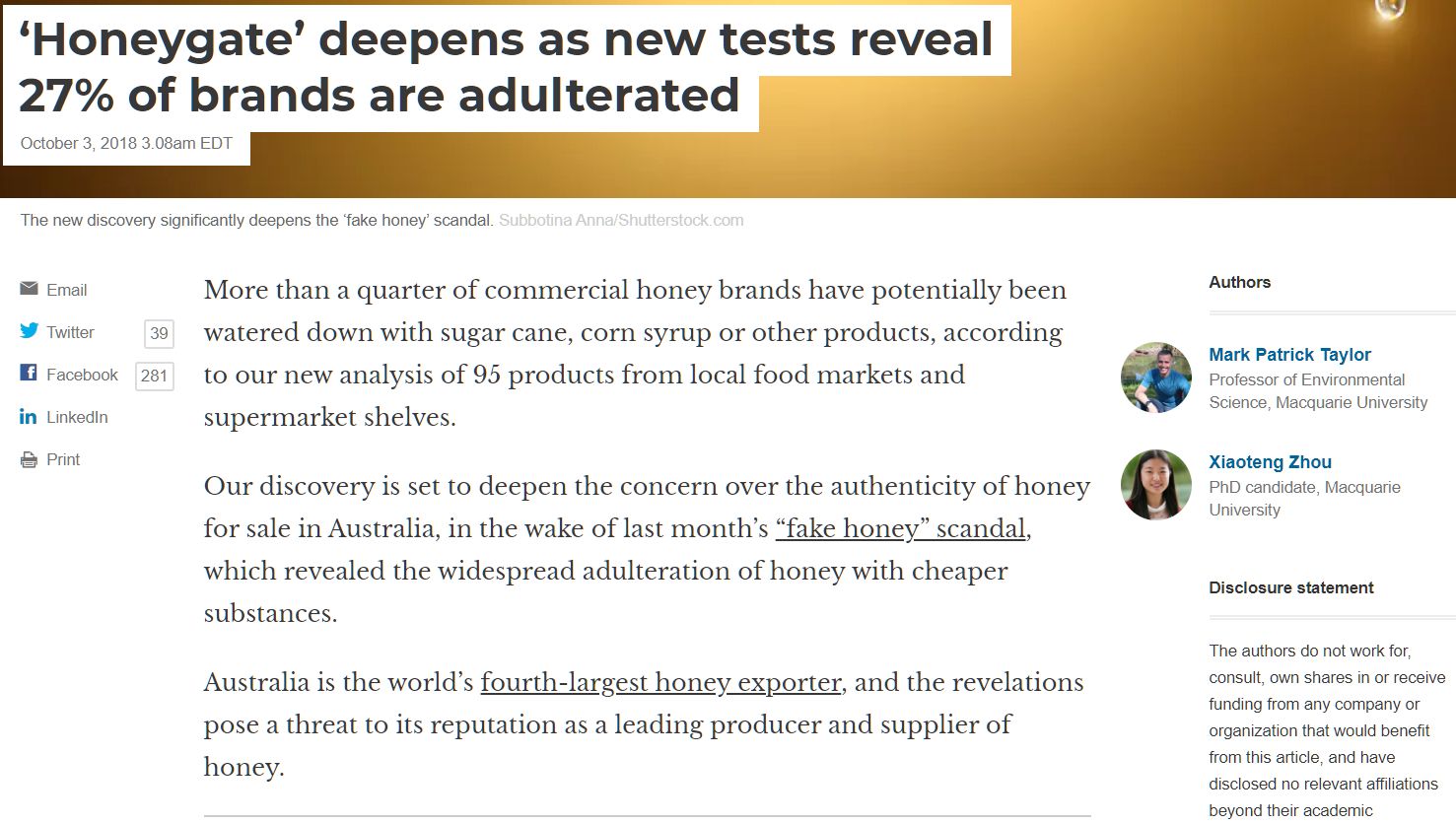Is It Real Honey?
Our Process
We know our honey is pure as we do nothing while processing the honey to alter its nutritional value. Here is what we do to process our raw, nearly organic, honey:
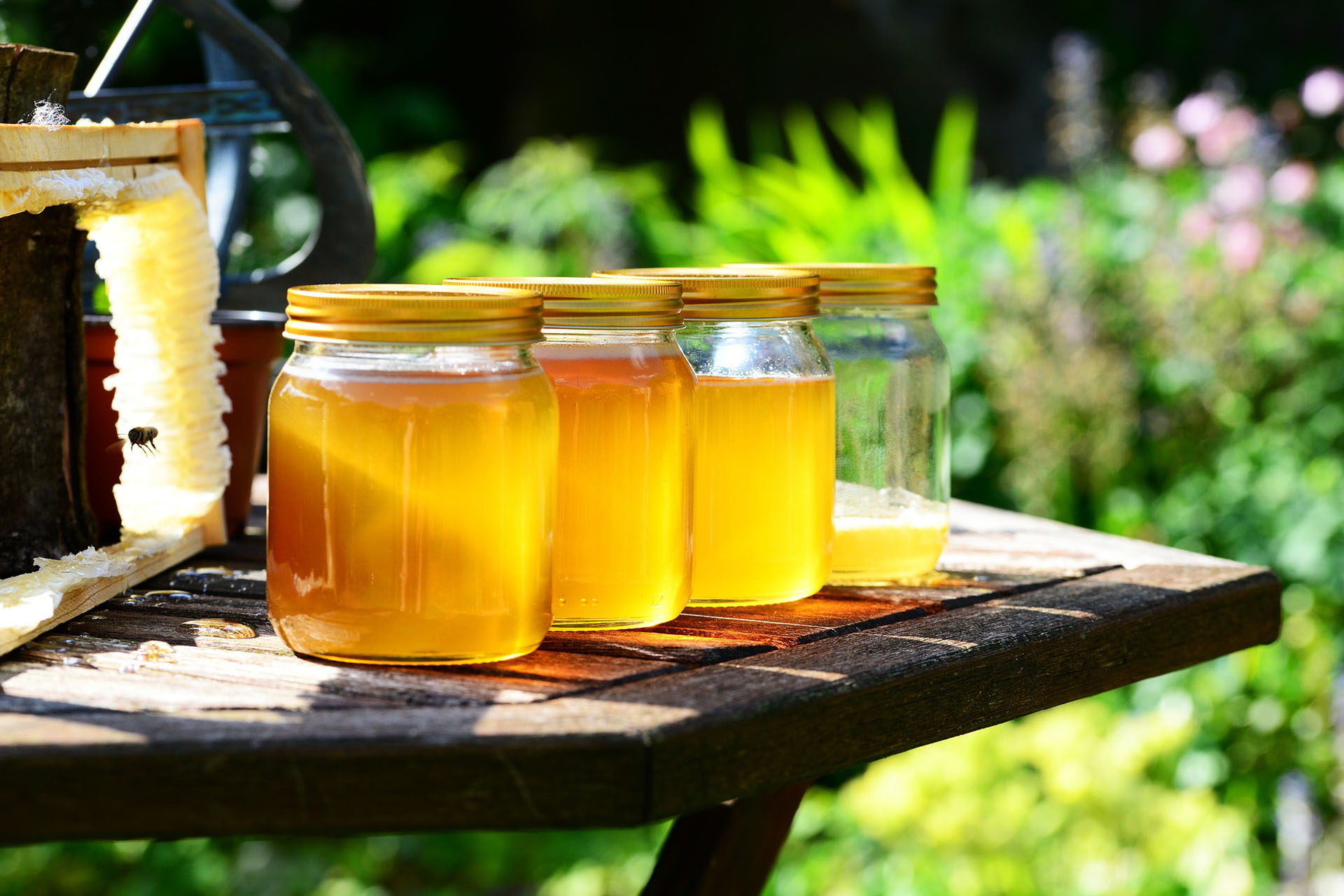
1.
We lay down drop-cloths, plastic, foil and cardboard to create a “clean-room” in our honey-house
4.
We install the uncapped honey filled super frame into a clean stainless steel excluder which spins the honey frames at very high speeds throwing the honey out of the cells onto the sides of the stainless steel drum, eventually collecting on the bottom
7.
We drain the honey from the buckets to fill our honey jars…and then label the bottles (we don’t use plastic due to possible contamination)
2.
After removing the honey supers from the hives we allow the honey-filled super frames to age for a few days before we begin the processing
5.
We use two increasingly dense screens to catch wax, large pollen and any other foreign substance as we empty the honey from the excluder into bottling buckets
3.
We remove a small sliver from the top of the wax comb on the honey super frame which exposes the honey in the combs on the frame
6.
We use a refractometer to test for the optimal water content in the honey (too much water % leads to spoilage)
That is it! You are eating the same honey the bees eat… only yours is from a jar!
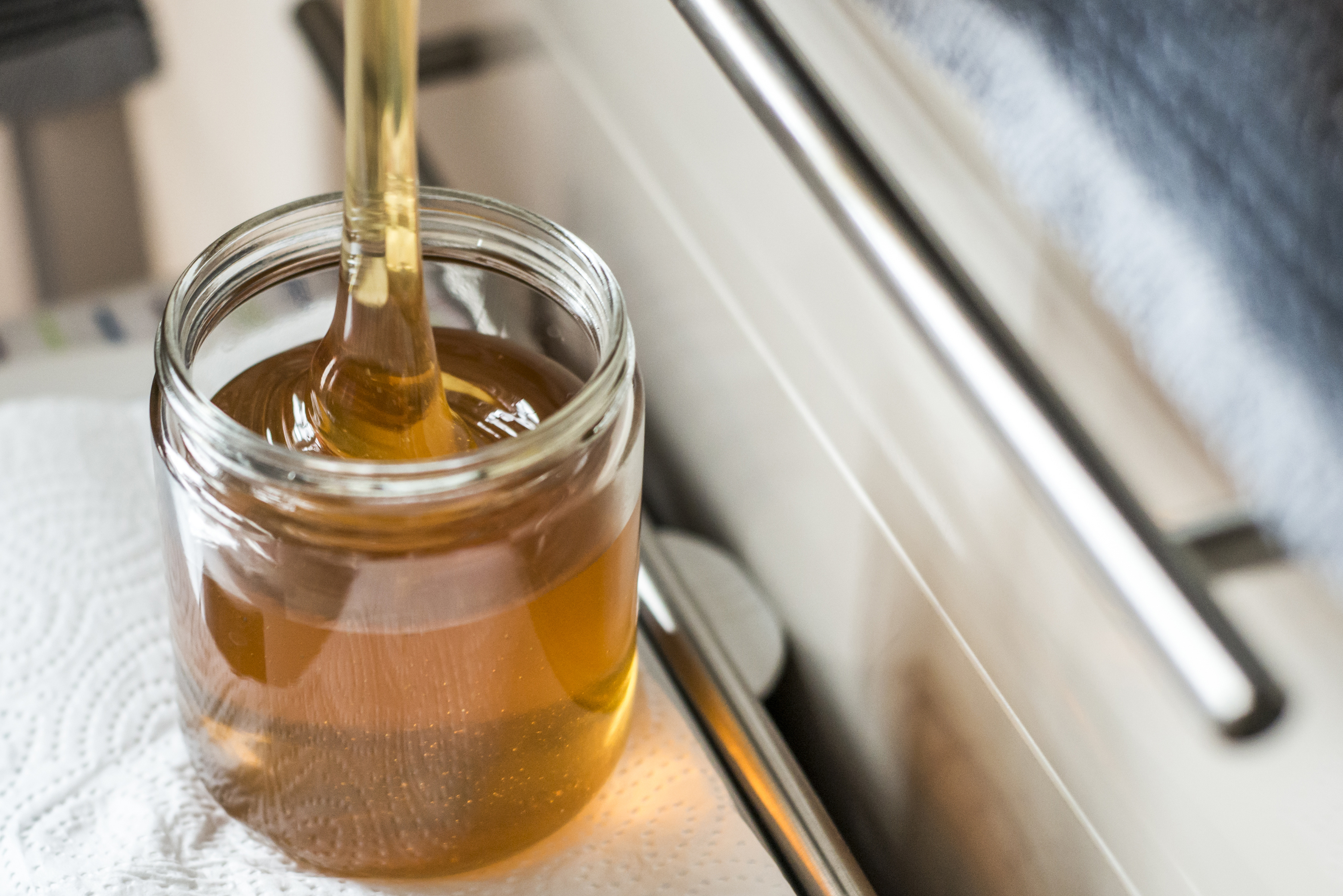
To better understand how our honey compares to other commercially sold honey we hired a scientific lab to test the chemical makeup of our honey. The lab reports showed our honey to be excellent and pure.
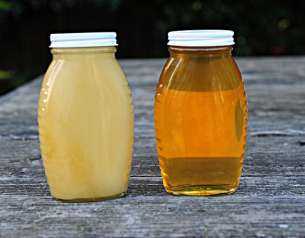
Don’t wreck your honey!
Crystallization of high quality honey occurs in three to eight months after harvest given the available nectar sources in our area, and is not a sign of spoilage, nor does it change the taste or healthy properties of honey. It simply changes the texture and color.
Honey that does not crystallize in time is NOT NORMAL unless it is all tupelo, sage or black locust honey; and we don’t have much of these blossoms in our area. Second, don’t overheat the honey during the clarifying process. Shoot for a melting temperature that does not exceed 97-100° F. Depending on how large the jar is liquefaction can take hours, but the payoff is worth it. If you can keep the honey between 96 and 98.6° F, you will protect the taste our honey is known for. Just as important, you will NOT “denature” the healthful enzymes which make our raw honey so healthy. The enzymes most identified in honey are invertase, diastase, glucose oxidase, catalase and acid phosphatase.
J. W. White, JR. & Landis W. Doner have written—“heat can deteriorate honey’s antibacterial properties to an even greater extent”. Lastly, worse than overheating honey, is using a microwave to liquefy honey. If you still have one in your house, please don’t use it on your honey!
Help your honey avoid crystallization for as long as possible by either eating the honey before it crystallizes or storing it properly. Crystallization is accelerated between 52 and 64°F. Never store honey in the refrigerator unless you plan to freeze it and consume it soon after thawing it. The best temperature to store your honey is between 80 and 90°F.
